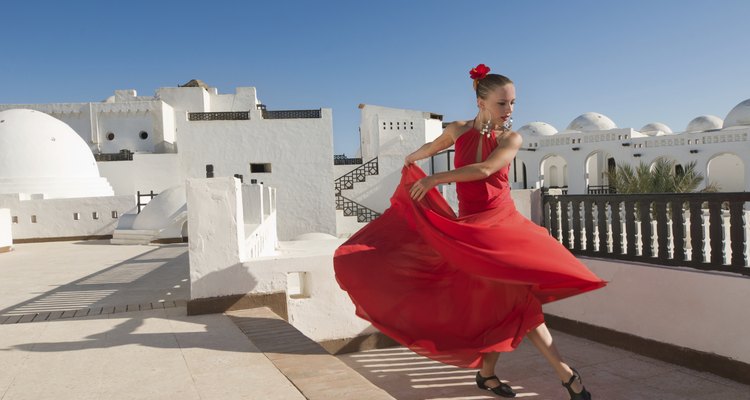
nikitabuida/iStock/Getty Images
Developed in the Andalucia region of southern Spain, flamenco is a style of guitar music and dance that is as expressive as it is complex. Flamenco has numerous styles, with performers improvising with grand gestures as they sing or dance to rhythmic music.
Woman's Costume
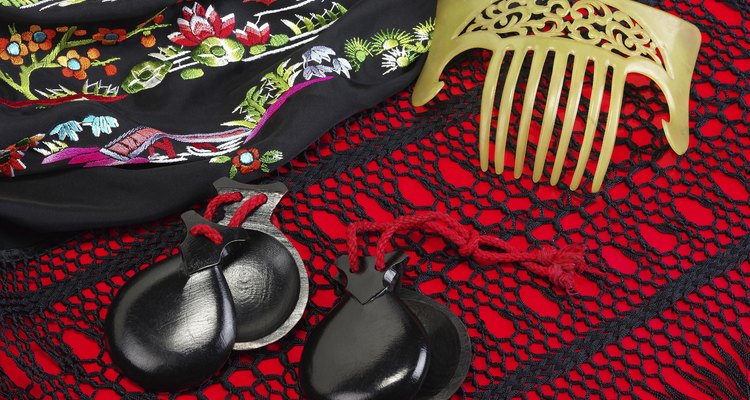
laura_uadjet/iStock/Getty Images
The woman's flamenco costume is extravagant and styled for the expressive requirements of the rhythmic dance steps. The largest element of the costume is the bata de cola, which is a long skirt that weighs 10 pounds, trails 5 feet behind the dancer and is full of flowing, colorful ruffles. A fringed, colorful, V-pattern shawl called a mantan is tied around the waist to give color to the rest of the costume.
Man's Costume
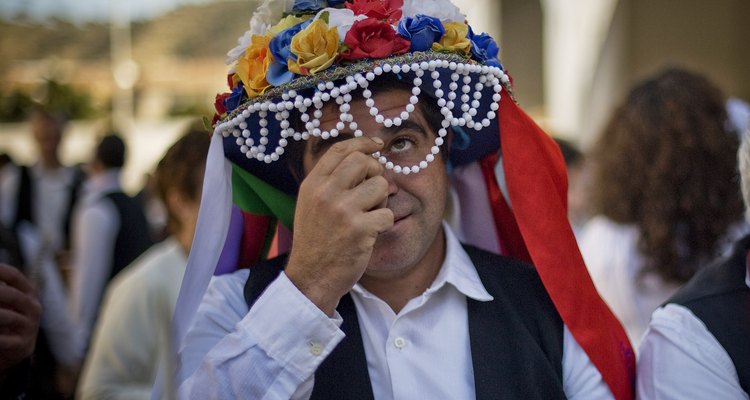
David Ramos/Getty Images News/Getty Images
The flamenco costume for a man is less involved than the woman's heavy skirt and shawl, and it traditionally only requires black, tight-fitting pants and shirt worn beneath a short jacket or vest. Male flamenco dancers also may wear straw hats.
Costume and Movement
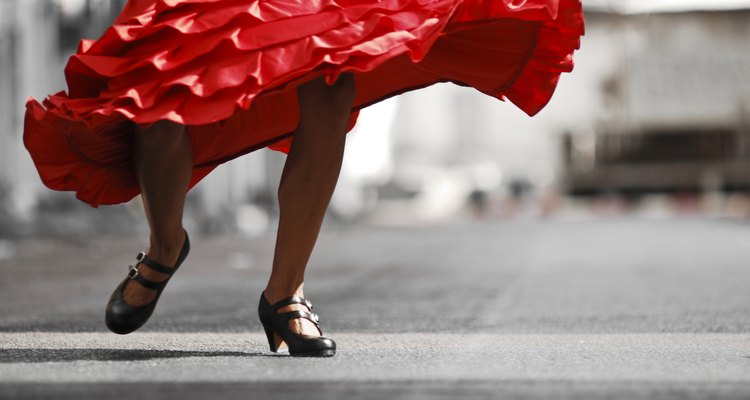
Rami Katzav/iStock/Getty Images
Female flamenco dancers use the bata de cola ruffles while they dance to accentuate the rhythm of the music. The bata de cola is shaken and lifted so the ruffles move with the music and highlight certain sounds. Male flamenco dancers do not use their costume during the dance; their steps are more about complex footwork.
Zapatos

Rami Katzav/iStock/Getty Images
As with tap dancing, flamenco requires shoes that have been enhanced for sound. Traditional flamenco shoes have nails driven into the soles on the toe, ball of the foot, flat area of the foot and heel. Both male and female flamenco dancers use the nails to bring out sound with dance stepping called zapateado or taconeo.
Costume Accessories
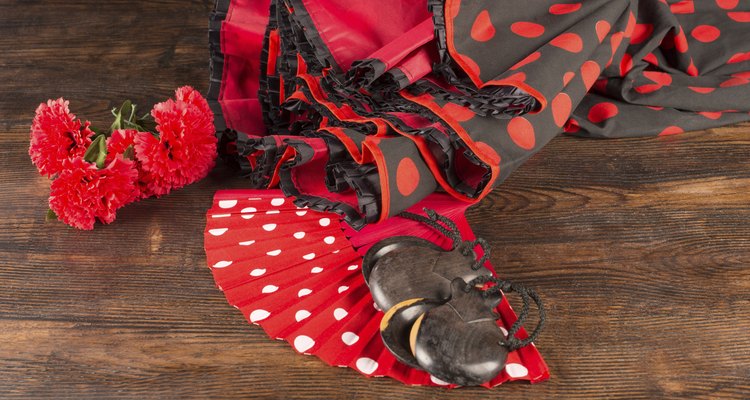
hemeroskopion/iStock/Getty Images
Male flamenco dancers wear palillos -- or castanets in English -- as a hand accessory to their costumes. Palillos are percussion instruments made of double pieces of wood and tied with string to the dancer's thumb. Male dancers rest the palillos in the palms of their hands and shake them to create a clicking sound. Female flamenco dancers do not use palillos but hold decorated, lace-trimmed fans that accentuate the dancer's hand and wrist movements.
Related Articles

How Do the Hula Girls Dress in Hawaii?

Toga Party Song List

Traditional Chilean Wedding Attire

What Heels Are Good for a Lace Dress?

Hispanic Clothing History

What Are Psychedelic Clothes?

How to Wear an 80s Headband

Marc Ecko Watch Instructions

What Is a Plastic Shoelace Tip Called?

Black Dance Clubs in Atlanta

How to Make a Can-Can Costume

How to Make a Tutu Stick Out
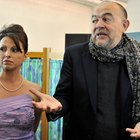
French Fashion of the 80s
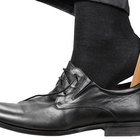
How to Use a Shoehorn
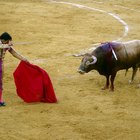
10 Facts About Clothing in Spain

Styling a Long Black Dress

How Men Wear a Bandanna

How to Make a Mexican Dance Dress

Polyester Vs. Cotton Socks

What Is a Slave Bracelet?
References
Writer Bio
Leah Waldron is the head of Traveler Services at First Abroad, a gap year travel company based in Boston and London. As a travel, research and LGBT news writer, Waldron has publication credit on magazines and newspapers including "Curve Magazine," "USA Today," "The Sun Sentinel" and the "The Houston Chronicle." Waldron has a bachelor's and master's degree in creative writing from Florida State University.
Photo Credits
nikitabuida/iStock/Getty Images